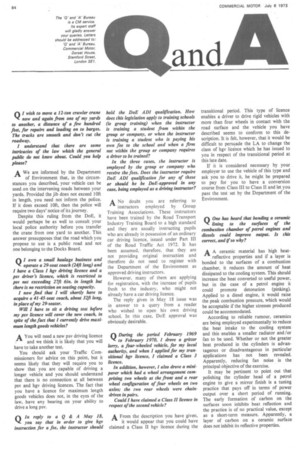Q One has heard that bonding a ceramic lining to the
Page 86

If you've noticed an error in this article please click here to report it so we can fix it.
surfaces of the combustion chamber of petrol engines and diesels could improve output. Is this correct, and if so why?
A A ceramic material has high heat
reflective properties and if a layer is bonded to the surfaces of a combustion chamber, it reduces the amount of heat dissipated to the cooling system. This should increase the heat converted to useful power, but in the case of a petrol engine it could promote detonation (pinking). Applied to a diesel engine, it would raise the peak combustion pressure, which would be acceptable if the higher stresses produced could be accommodated.
According to reliable rumour, ceramics are being employed experimentally to reduce the heat intake to the cooling system and this enables a smaller radiator and/or fan to be used. Whether or not the greater heat produced in the cylinders is advantageous or disadvantageous in particular applications has not been revealed. Apparently, reducing fan noise is the principal objective of the exercise.
It may be pertinent to point out that polishing the cylinder head of a petrol engine to give a mirror finish is a tuning practice that pays off in terms of power output over a short period of running. The early formation of carbon on the surfaces soon inhibits heat reflection and the practice is of no practical value, except as a short-term measure. Apparently, a layer of carbon on a ceramic surface does not inhibit its reflective properties.




























































































































































